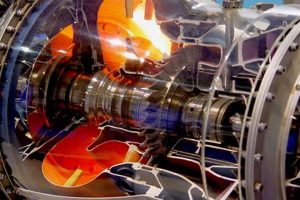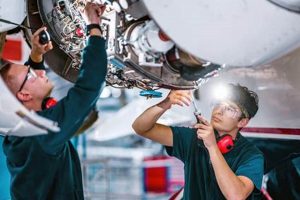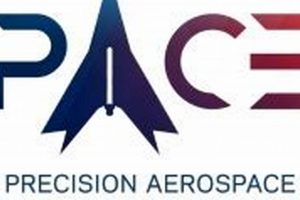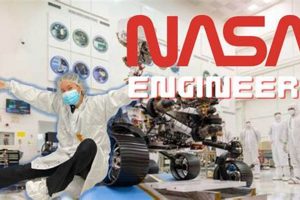The fields concerned with the realm beyond Earth’s atmosphere present distinct yet occasionally overlapping paths. One focuses on the design, development, and testing of aircraft and spacecraft. The other seeks to understand the physical properties and behavior of celestial objects and phenomena. For example, one might design a spacecraft propulsion system, while the other studies the composition of a distant star.
Understanding the differences and potential synergies between these areas is vital for advancements in space exploration, technology, and scientific discovery. A clearer distinction helps students choose a suitable academic path, informs research funding decisions, and fosters collaboration across related disciplines.Historically, both fields have evolved considerably, spurred by the space race and ongoing scientific breakthroughs.
The following sections delve into the core curriculum, career prospects, and necessary skill sets required to pursue either a career focused on crafting machines that navigate the skies and beyond or unraveling the mysteries of the cosmos.
Careful consideration is necessary when choosing between these disciplines. The following provides guidance for prospective students and professionals.
Tip 1: Assess Foundational Interests. Determine whether a passion lies in the practical application of physics and engineering principles to build tangible machines or in the theoretical exploration of the universe and its underlying laws. One involves designing aircraft; the other, modeling black holes.
Tip 2: Evaluate Mathematical Aptitude. Both require strong mathematical skills, but astrophysics leans heavily on advanced calculus, differential equations, and statistical analysis. Aerospace engineering, while also mathematically intensive, often emphasizes numerical methods and simulation software.
Tip 3: Research Specific Curricula. Compare the courses offered in undergraduate and graduate programs. Aerospace engineering typically includes subjects like aerodynamics, propulsion, and structural analysis. Astrophysics programs often cover topics such as cosmology, stellar evolution, and high-energy astrophysics.
Tip 4: Consider Career Objectives. Aerospace engineering graduates often find employment in the aerospace industry, defense sector, or government agencies. Astrophysics graduates may pursue careers in research, academia, or data analysis.
Tip 5: Explore Research Opportunities. Seek out undergraduate research experiences in areas of interest. Working on a CubeSat project provides aerospace engineering experience, while analyzing astronomical data from a telescope provides astrophysics experience.
Tip 6: Network with Professionals. Attend conferences and seminars to connect with individuals working in both fields. This provides valuable insights into the day-to-day realities of each profession.
Tip 7: Develop Complementary Skills. Consider developing skills applicable to both disciplines, such as programming, data analysis, and scientific writing. These skills enhance career versatility.
Careful self-assessment, research, and networking are essential for making an informed decision between these two challenging and rewarding fields.
The subsequent sections will offer a more in-depth comparison of specific career paths and potential areas of collaboration.
1. Focus
The divergence in central objective dictates fundamental differences between aerospace engineering and astrophysics. The distinct goals shape methodologies, skill sets, and ultimate career paths.
- Engineering Design and Implementation
Aerospace engineering centers on the practical application of scientific and engineering principles to design, build, and test aircraft and spacecraft. The focus lies on creating functional machines and systems capable of operating within specific parameters. This might involve designing an aircraft wing for optimal lift or developing a heat shield for a spacecraft re-entering Earth’s atmosphere.
- Theoretical Understanding and Modeling
Astrophysics prioritizes understanding the fundamental physical laws governing the universe and celestial objects. The emphasis is on developing theoretical models and conducting observational research to explain astronomical phenomena. This could entail creating computer simulations of galaxy formation or analyzing light spectra to determine the composition of a distant star.
- Technological Advancement vs. Scientific Discovery
Aerospace engineering seeks to advance technology to improve performance, efficiency, and safety in flight and space travel. The emphasis is on innovation and pushing the boundaries of what is technologically possible. Conversely, astrophysics aims to expand scientific knowledge and deepen understanding of the cosmos. The focus is on making new discoveries and contributing to the body of scientific literature.
- Problem Solving Orientation
Aerospace engineering commonly addresses tangible engineering problems related to flight dynamics, propulsion, and structural integrity. Challenges involve creating solutions within practical constraints such as budget, materials, and regulations. Astrophysics tackles more abstract scientific problems, such as the nature of dark matter or the origin of the universe. Challenges involve interpreting complex data and developing theories that align with observational evidence.
The disparate central objectives significantly impact the day-to-day activities and long-term career trajectories of individuals in each field. One strives to create; the other, to comprehend. The choice hinges on aligning personal inclination with core objectives.
2. Curriculum
The curriculum provides a foundational understanding of the principles governing each discipline. Disparities in course content directly impact the specialized knowledge and skills acquired. A curriculum tailored for one domain inevitably differs markedly from that designed for the other. For example, an individual seeking to design aircraft will require coursework in aerodynamics, structural analysis, and propulsion systems. Conversely, those aspiring to study stellar evolution would benefit more from courses in quantum mechanics, statistical mechanics, and observational astronomy. These variations reflect the diverse objectives and priorities of each field, shaping the expertise of its practitioners.
Core differences in curriculum extend beyond specific course titles. The emphasis placed on certain fundamental subjects also varies. While both may require physics and calculus, the applied engineer might delve into numerical methods and computational fluid dynamics, whereas the astrophysicist would likely explore advanced topics in general relativity and particle physics. This divergence also influences the use of software and practical lab work. One could gain experience with CAD software for design, the other could gain experience with telescope operation. The curriculum ultimately defines the essential skillset of a graduate and prepares them for their future career paths.
In summary, the curriculum serves as the cornerstone in distinguishing these fields. Differences in content, emphasis, and teaching methodologies directly impact the expertise students acquire. Recognizing the unique components of each curriculum is crucial for prospective students, as it shapes their future capabilities and dictates the career opportunities available upon graduation. The choice of curriculum, therefore, constitutes a pivotal decision in pursuing either of these rewarding professions.
3. Tools
The practical application of specialized tools distinguishes the methodologies employed in aerospace engineering from those used in astrophysics. In aerospace engineering, tools encompass design software (CAD), simulation software (CFD, FEA), wind tunnels, and materials testing equipment. These are essential for designing, analyzing, and prototyping aircraft and spacecraft. For example, CAD software allows engineers to create detailed 3D models of aircraft components, while wind tunnels enable the testing of aerodynamic performance under controlled conditions. The effectiveness of these tools directly influences the safety, efficiency, and performance of engineered systems.
Astrophysics, conversely, relies heavily on observational instruments such as telescopes (optical, radio, X-ray), spectrometers, and data analysis software. Large-scale telescopes, both ground-based and space-based, gather light from distant objects, while spectrometers analyze that light to determine chemical composition, temperature, and velocity. Data analysis software enables the processing and interpretation of vast datasets generated by these instruments. For example, the Hubble Space Telescope provides images and spectra that astrophysicists use to study galaxy evolution and the expansion of the universe. Thus, the quality and accessibility of these tools directly impact the rate and scope of astrophysical discoveries.
The tools employed in each field reflect the core objectives. Aerospace engineering aims to create functional machines, necessitating tools for design, fabrication, and testing. Astrophysics seeks to understand the universe, requiring tools for observation, data collection, and analysis. While both fields benefit from advancements in computing and instrumentation, the specific tools utilized and the way they are applied illustrate the fundamental differences in approach. Understanding these distinctions is vital for appreciating the specialized nature of each discipline and the expertise required to excel within them.
4. Environment
The term “environment” significantly distinguishes between the typical workplaces and operating contexts of aerospace engineering versus astrophysics. Aerospace engineering frequently entails working within industrial settings, laboratories, and testing facilities. These environments often involve direct interaction with hardware, prototypes, and manufacturing processes. Consider, for example, an aerospace engineer designing a new jet engine. The work would likely involve spending time in a testing facility, analyzing performance data, and collaborating with technicians on iterative design improvements. The environment is inherently hands-on, emphasizing teamwork and practical problem-solving to create tangible products. The physical workspace directly influences the efficiency and effectiveness of the engineering process.
Astrophysics, in contrast, often situates professionals within research institutions, observatories, and academic departments. Data analysis, theoretical modeling, and the interpretation of observational findings form the core activities. An astrophysicist studying distant galaxies, for instance, might spend considerable time at a computer, processing images from telescopes or developing simulations to test hypotheses about galaxy formation. The environment is more focused on intellectual exploration and collaborative research, with access to specialized computing resources and scientific literature being paramount. While fieldwork at observatories may occur, the primary workspace often involves data processing and theoretical analyses.
The environmental differences, thus, significantly impact the day-to-day experiences and career trajectories of individuals in these fields. Aerospace engineering requires adaptability within dynamic industrial settings, demanding effective communication and coordination among diverse teams. Astrophysics necessitates a strong capacity for independent research, critical thinking, and the ability to synthesize complex information. Understanding these environmental distinctions is essential for aligning personal preferences with the respective demands of each field and preparing for the challenges and rewards associated with their distinct operating contexts.
5. Outcomes
Career trajectories and contributions to society significantly differ based on the chosen field. Considering “Outcomes” within the context of aerospace engineering versus astrophysics provides essential clarity for individuals contemplating their professional paths.
- Aerospace Engineering: Technological Advancement and Practical Applications
Aerospace engineers contribute to the design, development, and improvement of aircraft, spacecraft, satellites, and related systems. Outcomes include enhanced air travel safety, more efficient spacecraft propulsion, and advanced satellite technology enabling communication and Earth observation. For example, the design of more fuel-efficient aircraft reduces carbon emissions, while advancements in satellite technology improve weather forecasting and global communication networks. These outcomes directly impact daily life and contribute to economic growth.
- Astrophysics: Expanding Knowledge of the Universe and Fundamental Laws
Astrophysicists focus on understanding the universe, celestial objects, and the fundamental laws governing their behavior. Outcomes include discoveries about the origins of the universe, the nature of black holes, and the potential for life beyond Earth. For instance, the detection of exoplanets expands the understanding of planetary systems beyond our solar system, while research into dark matter and dark energy challenges existing cosmological models. These outcomes primarily contribute to scientific knowledge and intellectual advancement.
- Economic Impact and Job Creation
Aerospace engineering drives economic growth through the development of new technologies and the creation of jobs in manufacturing, research, and development. The aerospace industry directly employs engineers and technicians and indirectly supports numerous related industries. Astrophysics, while less directly tied to economic activity, contributes to technological advancements in areas like sensor technology and data analysis, which can have broader economic implications. Additionally, astrophysics research often fosters innovation and attracts skilled workers, benefiting local economies.
- Societal Benefits and Public Engagement
Aerospace engineering directly benefits society through improved transportation, communication, and national security. Satellites provide essential services such as GPS navigation, weather monitoring, and disaster relief. Astrophysics inspires public interest in science and technology through discoveries about the universe and space exploration. Public engagement with astrophysics can encourage students to pursue STEM careers and foster a greater appreciation for scientific inquiry.
The divergence between outcomes in aerospace engineering and astrophysics reflects the differing goals and priorities of each field. Aerospace engineering seeks to improve technology and solve practical problems, while astrophysics seeks to expand knowledge and understand the universe. Both fields offer valuable contributions to society, but their impact is realized through distinct pathways.
Frequently Asked Questions
This section addresses common inquiries regarding the distinct characteristics and career prospects associated with aerospace engineering and astrophysics.
Question 1: Is a background in physics equally valuable for both aerospace engineering and astrophysics?
While a strong foundation in physics is crucial for both disciplines, the specific areas of emphasis diverge. Aerospace engineering necessitates a deep understanding of classical mechanics, thermodynamics, and fluid dynamics. Astrophysics places greater importance on quantum mechanics, electromagnetism, and general relativity.
Question 2: What level of mathematical proficiency is required for each field?
Both require advanced mathematical skills. Aerospace engineering relies heavily on differential equations, linear algebra, and numerical methods for modeling and simulation. Astrophysics necessitates a robust understanding of calculus, statistics, and computational methods for data analysis and theoretical modeling.
Question 3: Are there opportunities for collaboration between aerospace engineers and astrophysicists?
Collaboration is possible, particularly in areas such as the development of advanced space telescopes and missions to explore other planets. Aerospace engineers contribute to the design and construction of spacecraft and instruments, while astrophysicists provide scientific expertise and guidance on mission objectives.
Question 4: Which field offers greater job security and earning potential?
Job security and earning potential fluctuate based on economic conditions and individual skills. Aerospace engineering typically offers more immediate job opportunities in the aerospace industry. Astrophysics careers often involve academic research or government positions, with funding availability influencing job prospects.
Question 5: Does one field demand more hands-on experience than the other?
Aerospace engineering emphasizes hands-on experience through laboratory work, design projects, and internships in industry settings. Astrophysics tends to be more theoretical, focusing on data analysis and computational modeling, although observational experience at telescopes is also valuable.
Question 6: What are the key differences in the day-to-day work activities?
Aerospace engineers frequently engage in design, testing, and analysis of aircraft and spacecraft components. Astrophysicists typically conduct research, analyze data, develop theoretical models, and publish scientific papers.
In summary, both aerospace engineering and astrophysics present unique challenges and rewards. The ideal choice depends on individual interests, skills, and career aspirations. A careful evaluation of the distinctions outlined above is crucial for making an informed decision.
The following section explores the long-term implications of these choices.
Aerospace Engineering vs. Astrophysics
This exploration of aerospace engineering and astrophysics has delineated key differences in curriculum, tools, environment, and career outcomes. Aerospace engineering focuses on the practical application of scientific principles to design and build systems, while astrophysics seeks to understand the fundamental laws governing the universe. The career paths diverge significantly, with aerospace engineering offering opportunities in industry and government, and astrophysics leading to research and academia. Each field presents unique challenges and rewards, demanding distinct skill sets and contributing to society in different ways.
The informed choice between aerospace engineering vs astrophysics requires careful consideration of personal aptitudes and long-term goals. The distinctions highlighted herein should guide prospective students and professionals towards paths aligned with their individual aspirations and the broader needs of scientific advancement and technological innovation. Future progress relies on cultivating expertise in both domains, recognizing their distinct contributions to knowledge and societal betterment.







